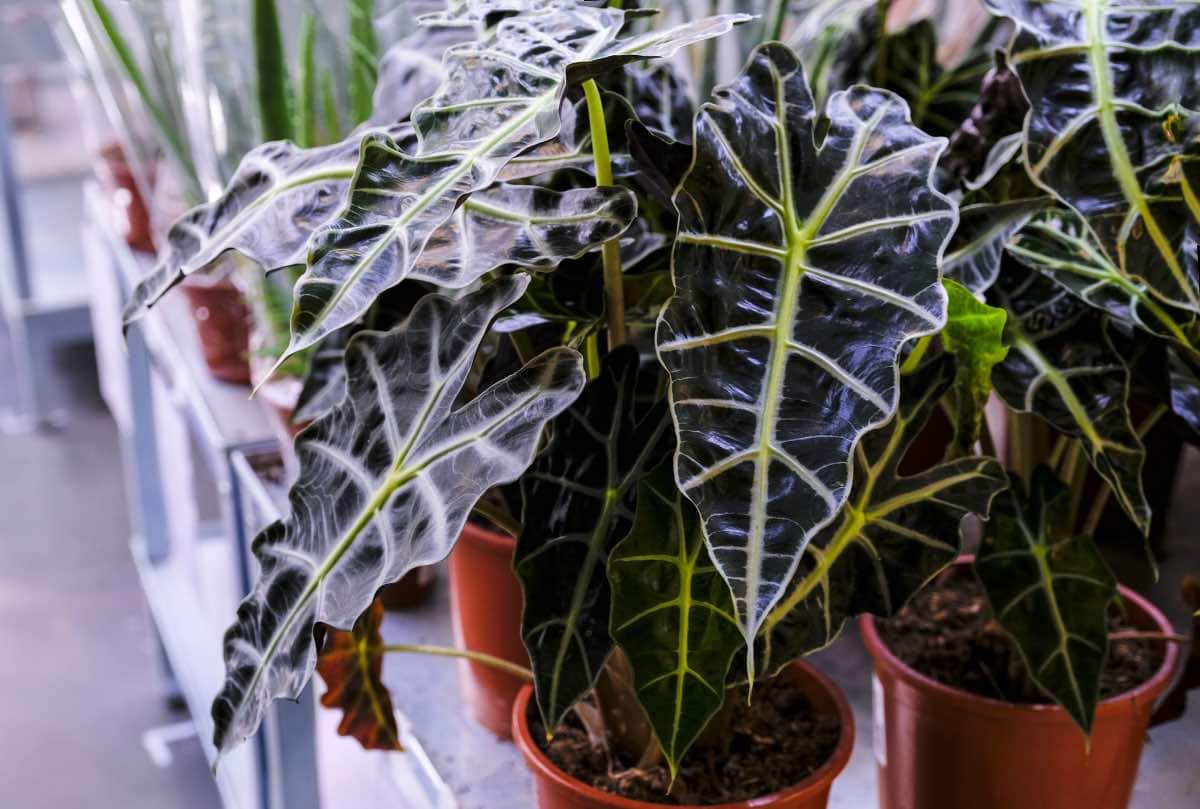Rarely does a plant exude elegance and drama more luxuriously than the Alocasia plant. With its array of exotic, heart-shaped leaves and enchanting tropical allure, the Alocasia is a prized jewel in any indoor gardener’s arsenal. But the stunning plant demands more than just admiration—it requires a keen understanding of its loving care. One crucial aspect of ensuring the health and vitality of Alocasia lies in the choice of soil.
For the uninitiated, it might seem like all soils are created equal. However, just as a bespoke dress fits better than off-the-rack, this unique plant flourishes better in a specific kind of soil tailored to its needs. Soil acts as the life source for any plant, offering nutrients, holding water, and allowing roots to grip and grow. Getting the soil mix correct is sometimes the difference between an Alocasia plant that merely survives and one that truly thrives, boasting strong, rich foliage and robust growth.
In this comprehensive guide, ‘What Type of Soil is Best for Alocasia Plant?’, we aim to unveil the soil secrets for Alocasia plants. Here you’ll find in-depth insights and expert tips to help you understand and select the very best soil for your Alocasia. Whether you are a gardening novice or a seasoned green thumb, this guide acts as a valuable resource for nurturing your Alocasia plant to its full potential.
Understanding Alocasia’s Soil Requirements
Alocasia plants are native to tropical rainforests, where they grow in well-draining, nutrient-rich, and slightly acidic soil. To replicate these conditions in your garden or indoor space, it is crucial to choose a potting mix that provides a balance of drainage, aeration, and moisture retention. The ideal soil for Alocasia plants should have the following characteristics:
- Well-draining: Alocasia plants are susceptible to root rot if their roots are left sitting in waterlogged soil. A well-draining soil mix will ensure that excess water drains away quickly, preventing the roots from becoming waterlogged.
- Aerated: Alocasia plants require oxygen at their roots to facilitate healthy growth. A soil mix that allows for good aeration will ensure that the roots have access to the oxygen they need.
- Moisture-retentive: Although Alocasia plants require well-draining soil, they also need consistent moisture. A soil mix that retains some moisture without becoming waterlogged is essential for Alocasia plants.
- Nutrient-rich: Alocasia plants require a steady supply of nutrients to support their growth. A nutrient-rich soil mix will provide the necessary nutrients for the plant to flourish.
- Slightly acidic: Alocasia plants prefer slightly acidic soil, with a pH range between 5.5 and 6.5. This pH range helps the plant to access essential nutrients more effectively.
Creating the Ideal Potting Mix for Alocasia Plants
To create the perfect potting mix for your Alocasia plant, you can use a combination of the following ingredients:
- Peat moss or coco coir: These components help to retain moisture and improve the overall structure of the potting mix. Peat moss is slightly acidic, which is ideal for Alocasia plants. However, coco coir is a more sustainable alternative and can be used in place of peat moss.
- Perlite or pumice: These lightweight, volcanic materials improve drainage and aeration in the potting mix. They prevent the soil from becoming compacted, ensuring that the roots have access to oxygen.
- Orchid bark or charcoal: These materials further enhance drainage and aeration in the potting mix. Orchid bark and charcoal also help to create air pockets within the soil, promoting healthy root growth.
- Compost or well-aged manure: These organic materials provide essential nutrients to support the growth of Alocasia plants. They also contribute to the moisture retention and aeration of the soil.
A recommended potting mix for Alocasia plants is as follows:
- 40% peat moss or coco coir
- 30% perlite or pumice
- 20% orchid bark or charcoal
- 10% compost or well-aged manure
This mix provides the ideal balance of drainage, aeration, moisture retention, and nutrients for Alocasia plants.
Soil Amendments for Alocasia Plants
To further enhance the quality of your Alocasia plant’s soil, you may consider incorporating the following amendments:
- Worm castings: These nutrient-rich, organic materials provide an excellent source of slow-release nutrients for Alocasia plants. Worm castings can be mixed into the potting mix or used as a top dressing.
- Mycorrhizal fungi: These beneficial fungi form a symbiotic relationship with plant roots, helping them to access nutrients and water more efficiently. Mycorrhizal fungi can be added to the potting mix to improve the overall health of your Alocasia plant.
- Slow-release fertilizer: A slow-release fertilizer can be mixed into the potting mix or applied as a top dressing to provide a steady supply of nutrients throughout the growing season.
- Lime or sulfur: If the pH of your potting mix is outside the ideal range for Alocasia plants, you can use lime (to raise the pH) or sulfur (to lower the pH) to adjust it accordingly.
Repotting Alocasia Plants
Alocasia plants typically require repotting every 2-3 years, as they outgrow their current pots and exhaust the nutrients in the soil. When repotting your Alocasia plant, choose a new pot that is 1-2 inches larger in diameter than the current pot and ensure that it has drainage holes. Carefully remove the plant from its current pot and gently shake off any excess soil from the roots. Place the plant in the new pot and fill it with the ideal potting mix, ensuring that the plant is at the same soil level as it was in the previous pot.
Final Thoughts
Providing your Alocasia plant with the ideal soil conditions is crucial for its overall health and growth. By creating a well-draining, aerated, moisture-retentive, nutrient-rich, and slightly acidic potting mix, you can ensure that your Alocasia plant thrives and flourishes in your garden or indoor space. Additionally, incorporating soil amendments and repotting your plant as needed will further promote its growth and vitality.


Leave a Reply